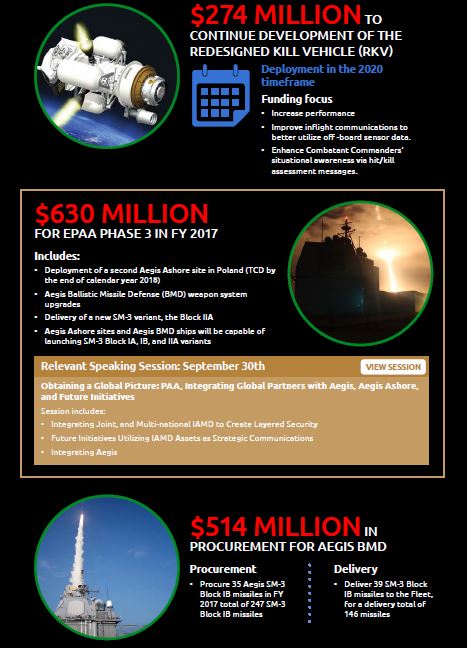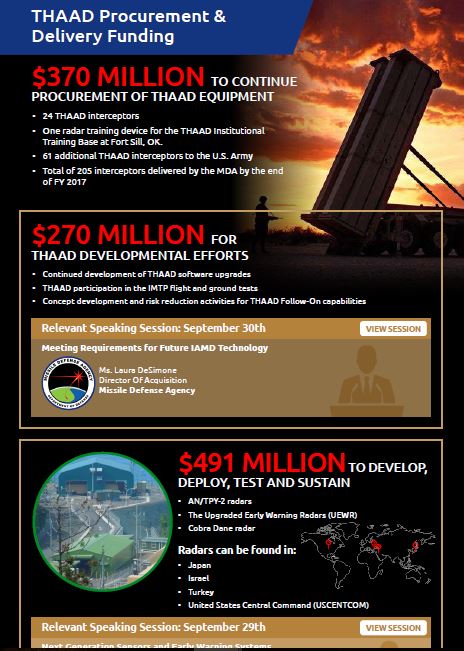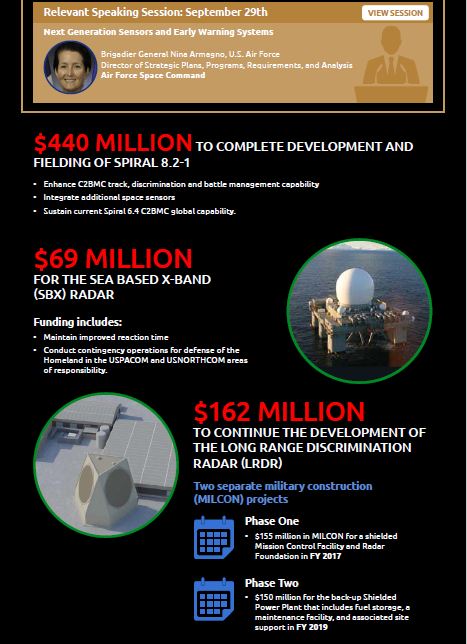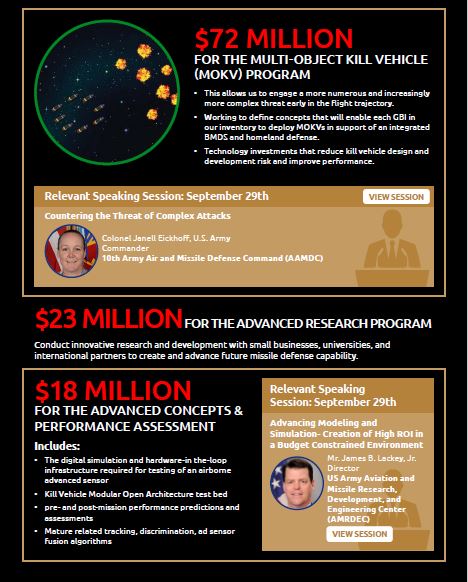Austin wrote:Get Ready, Russia and Iran: America Wants to Kill Nuclear Missiles in Space
Duh I thought SM-3 II-A missiles were already deployed and they are yet to test it.
 Re: US ABM Systems
Re: US ABM SystemsAustin wrote:Get Ready, Russia and Iran: America Wants to Kill Nuclear Missiles in Space
 Re: US ABM Systems
Re: US ABM Systems Re: US ABM Systems
Re: US ABM Systems Re: US ABM Systems
Re: US ABM Systems Re: US ABM Systems
Re: US ABM Systems
 Re: US ABM Systems
Re: US ABM Systems Re: US ABM Systems
Re: US ABM Systemsmax steel wrote:THAAD Extended Range
 Re: US ABM Systems
Re: US ABM Systems Re: US ABM Systems
Re: US ABM SystemsAlfaT8 wrote:max steel wrote:THAAD Extended Range
Holy f#ck, they're not even trying to hide it anymore, Scuds, Silo's and Delta-class subs, obvious message to Russia.
 Re: US ABM Systems
Re: US ABM SystemsAlfaT8 wrote:max steel wrote:THAAD Extended Range
Holy f#ck, they're not even trying to hide it anymore, Scuds, Silo's and Delta-class subs, obvious message to Russia.
 Re: US ABM Systems
Re: US ABM Systems Re: US ABM Systems
Re: US ABM Systems









 Re: US ABM Systems
Re: US ABM SystemsAustin wrote:Strategic Capabilities of SM-3 Block IIA Interceptors (June 30, 2016)
 Re: US ABM Systems
Re: US ABM Systems Re: US ABM Systems
Re: US ABM Systems

 Re: US ABM Systems
Re: US ABM Systems
 Found this interesting
Found this interesting
 Re: US ABM Systems
Re: US ABM Systems
The Pentagon’s Missile Defense Agency is in the early phases of engineering a next-generation “Star Wars”-type technology able to knock multiple incoming enemy targets out of space with a single interceptor, officials said.
The new system, called Multi-Object Kill Vehicle, or MOKV, is designed to release from a Ground Based Interceptor and destroy approaching Inter Continental Ballistic Missiles, or ICBMs -- and also take out decoys traveling alongside the incoming missile threat.
“We will develop and test, by 2017, MOKV command and control strategies in both digital and hardware-in-the-loop venues that will prove we can manage the engagements of many kill vehicles on many targets from a single interceptor. We will also invest in the communication architectures and guidance technology that support this game-changing approach,” a spokesman for the Missile Defense Agency, told Scout Warrior a few months ago.
Decoys or countermeasures are missile-like structures, objects or technologies designed to throw off or confuse the targeting and guidance systems of an approaching interceptor in order to increase the probability that the actual missile can travel through to its target.
If the seeker or guidance systems of a “kill vehicle” technology on a Ground Base Interceptor, or GBI, cannot discern an actual nuclear-armed ICBM from a decoy – the dangerous missile is more likely to pass through and avoid being destroyed. MOKV is being developed to address this threat scenario.
The Missile Defense Agency has awarded MOKV development deals to Boeing, Lockheed and Raytheon as part of a risk-reduction phase able to move the technology forward, Lehner said.
Steve Nicholls, Director of Advanced Air & Missile Defense Systems for Raytheon, told Scout Warrior the MOKV is being developed to provide the MDA with “a key capability for its Ballistic Missile Defense System - to discriminate lethal objects from countermeasures and debris. The kill vehicle, launched from the ground-based interceptor extends the ground-based discrimination capability with onboard sensors and processing to ensure the real threat is eliminated.”
MOKV could well be described as a new technological step in the ongoing maturation of what was originally conceived of in the Reagan era as “Star Wars” – the idea of using an interceptor missile to knock out or destroy an incoming enemy nuclear missile in space. This concept was originally greeted with skepticism and hesitation as something that was not technologically feasible.
Not only has this technology come to fruition in many respects, but the capability continues to evolve with systems like MOKV. MOKV, to begin formal product development by 2022, is being engineered with a host of innovations to include new sensors, signal processors, communications technologies and robotic manufacturing automation for high-rate tactical weapons systems, Nicholls explained.
The trajectory of an enemy ICBM includes an initial “boost” phase where it launches from the surface up into space, a “midcourse” phase where it travels in space above the earth’s atmosphere and a “terminal” phase wherein it re-enters the earth’s atmosphere and descends to its target. MOKV is engineered to destroy threats in the “midcourse” phase while the missile is traveling through space.
An ability to destroy decoys as well as actual ICBMs is increasingly vital in today’s fast-changing technological landscape because potential adversaries continue to develop more sophisticated missiles, countermeasures and decoy systems designed to make it much harder for interceptor missile to distinguish a decoy from an actual missile.
As a result, a single intercept able to destroy multiple targets massively increases the likelihood that the incoming ICBM threat will actually be destroyed more quickly without needing to fire another Ground Based Interceptor.
Raytheon describes its developmental approach as one that hinges upon what’s called “open-architecture,” a strategy designed to engineer systems with the ability to easily embrace and integrate new technologies as they emerge. This strategy will allow the MOKV platform to better adjust to fast-changing threats, Nicholls said.
The MDA development plan includes the current concept definition phase, followed by risk reduction and proof of concept phases leading to a full development program, notionally beginning in fiscal year 2022, Nicholls explained.
“This highly advanced and highly technical kill vehicle takes a true dedication of time and expertise to properly mature. It is essential to leverage advancements from other members of the Raytheon kill vehicle family, including the Redesigned Kill Vehicle,” Nicholls said.
While the initial development of MOKV is aimed at configuring the “kill vehicle” for a GBI, there is early thinking about integrating the technology onto a Standard Missile-3, or SM-3, an interceptor missile also able to knock incoming ICBMs out of space.The SM-3 is also an exo-atmopheric "kill vehicle," meaning it can destroy short and intermediate range incoming targets; its "kill vehilce" has no explosives but rather uses kinetic energy to collide with and obliterate its target. The resulting impact is the equivalent to a 10-ton truck traveling at 600 mph, Raytheon statements said.
“Ultimately, these Multi-Object Kill Vehicles will revolutionize our missile defense architecture, substantially reducing the interceptor inventory required to defeat an evolving and more capable threat to the homeland,” an MDA official said.
Kris Osborn became the Managing Editor of Scout Warrior in August of 2015. His role with Scout.com includes managing content on the Scout Warrior site and generating independently sourced original material. Scout Warrior is aimed at providing engaging, substantial military-specific content covering a range of key areas such as weapons, emerging or next-generation technologies and issues of relevance to the military. Just prior to coming to Scout Warrior, Osborn served as an Associate Editor at the Military.com. Osborn previously served at the Pentagon as a Highly Qualified Expert with the Office of the Assistant Secretary of the Army - Acquisition, Logistics & Technology. Osborn has also worked as an anchor and on-air military specialist at CNN and CNN Headline News. This story originally appeared in Scout Warrior.
 Re: US ABM Systems
Re: US ABM Systems
 Re: US ABM Systems
Re: US ABM Systemsmiketheterrible wrote:What the hell does this have to do with s-300 series of aa systems or Russian systems altogether if it is American? I understand you can read English, no?
Word of advice to people - before moving onto another system that is likely to fail, better get your current systems working. Thaad and alike seem to be common failures against 1960 missiles.
Also, system will be countered with newer tech like quasi ballistic missile systems that currently exist and change in countermeasure systems and hypersonic. What this is, is proposing against something that is being replaced anyway.
 Re: US ABM Systems
Re: US ABM Systems|
|
|